I love Pi Day because it’s the closest thing we have to a math holiday. Each year, I celebrate by baking a Pi Day pie. I was sad to break my streak last year (I was traveling), so I wanted to come back strong this year. I decided to use 2019’s Pi Day pie as an opportunity to challenge the mathematical connections I could make, as well as my own pie-baking practice.
Now, this couldn’t be just any ol’ apple pie with the typical “measure the circumference and diameter” lesson attached to it. We deserve better. Yes, pi is elusive and beautiful for its mystique, but I think we can dive deeper - past its “3.14” and connect it to richer ideas of irrationality. And I think pie would be an excellent medium through which to explore these math ideas. Sure “beets” a textbook.
To breathe new life into this task, I decided to (plot twist!) bake a savory pie. My roommate passed along this recipe for a Savory Vegetable Cheese Tart. What I love about this recipe is that it’s easy and flexible, especially for this non-baker who doesn’t like to measure anything. I also like that you can decorate the top with any vegetable. It’s an open canvas, if you will, for mathematical exploration and artistic expression. I very deliberately used root vegetables - potatoes, sweet potatoes, and beets. You'll see why later!
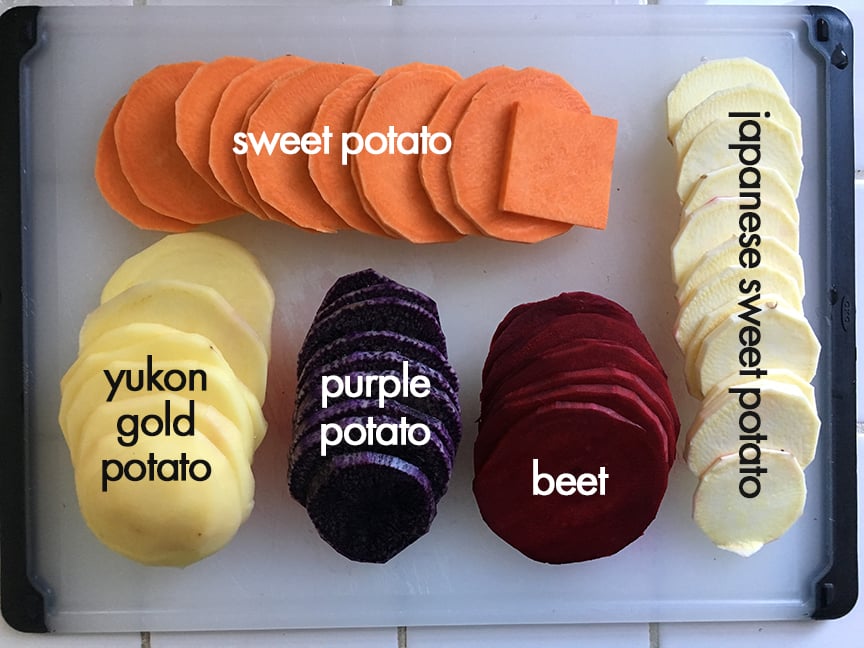
First, what are some basic things we know about pi? Pi = circumference/diameter. This is true for any circle - all circles of all sizes - because pi is a ratio, meaning that every circumference of a circle is about three of its diameters long, plus a little more. We can prove that this ratio scales for any circle.
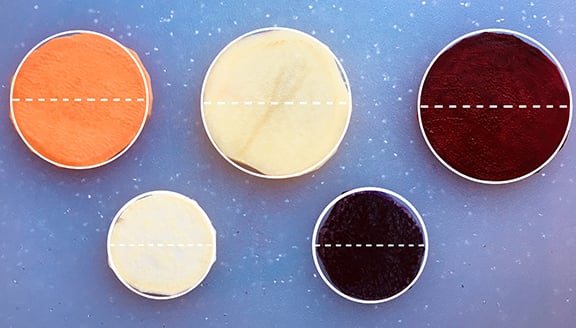
A classic lesson is to measure circles that you find in the world, or pies that you bring to school, and collect this data as a class to approximate pi together. The lesson goes:
Give each student a slice of a vegetable circle.
Let each student measure the circumference and diameter of their slice.
Collect this data and see how close you can get to pi.
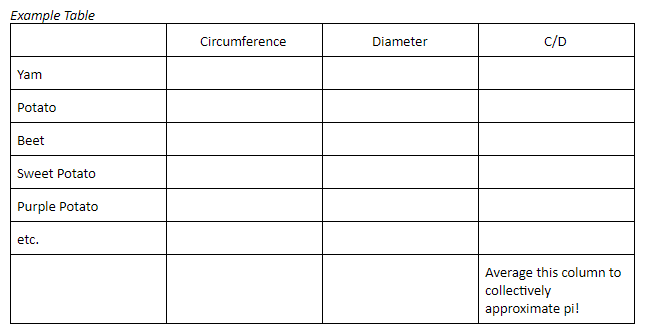
For this pie, I used root vegetables for an “irrational” reason, but you could use any vegetable that has a circular cross section. You can explore the cross sections of vegetables by casting shadows against a wall or by having an adult actually slice them.
Some questions you can ask your students:

Cross sections of my root vegetables from different angles. Perspective matters!
Pi Day is a great opportunity to have rich discussions about and marvel at irrationality. Pi is just one specific, special irrational number. But there are so many more! In fact, there are infinitely more irrational numbers than there are rational. But what does that mean?
Some questions you can think through with your students:
The ST Math® puzzle “Number Line Zoom” is a great example of this idea—that you can forever zoom into a number line and find more numbers between numbers. Because we can always add another digit, or tweak a digit, the world of irrationality is truly infinite. Just the space between 3 and 4 contains its own infinity! Pi is one speck on that number line, alongside many more irrational numbers.
These are deep philosophical questions that you can introduce to and discuss with a wide range of students. Regardless of your age, it will probably hurt your brain all the same because you’re expanding into an abyss of endless numbers with endless digits. You know, eating some pie might make that headache go away...
As mentioned above, I specifically used root vegetables to decorate my pie (potatoes, sweet potatoes, and beets). It’s not because I’m partial to starches, but because I’m a fan of puns, especially math puns.
These roots are a reference to math roots, like square roots, cube roots, etc., which are often a source of irrational numbers. I took the liberty to turn some of my root circles into actual “square roots” and some interesting relationships arose.
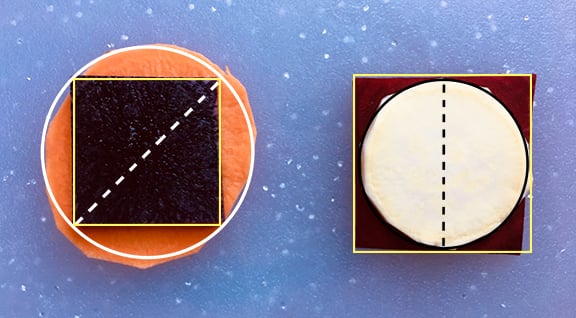
I’ve always loved these circle-to-square questions because you only need one piece of information and you’re able to derive the rest. In this case, let’s say the edge of the square is one unit. What can you figure out about each circle above in the following cases? (Hint: The Pythagorean Theorem will be helpful here.)
Now that I’ve got you musing about pi, irrationality, square roots, and how they’re all connected, did you forget that we haven’t even decorated the pie yet? Once you’ve blind-baked your pie crust and filled it with the cheese filling, your pie is now a blank canvas waiting to be mathematically and artistically adorned. Like the digits of irrational numbers, the possibilities are infinite!
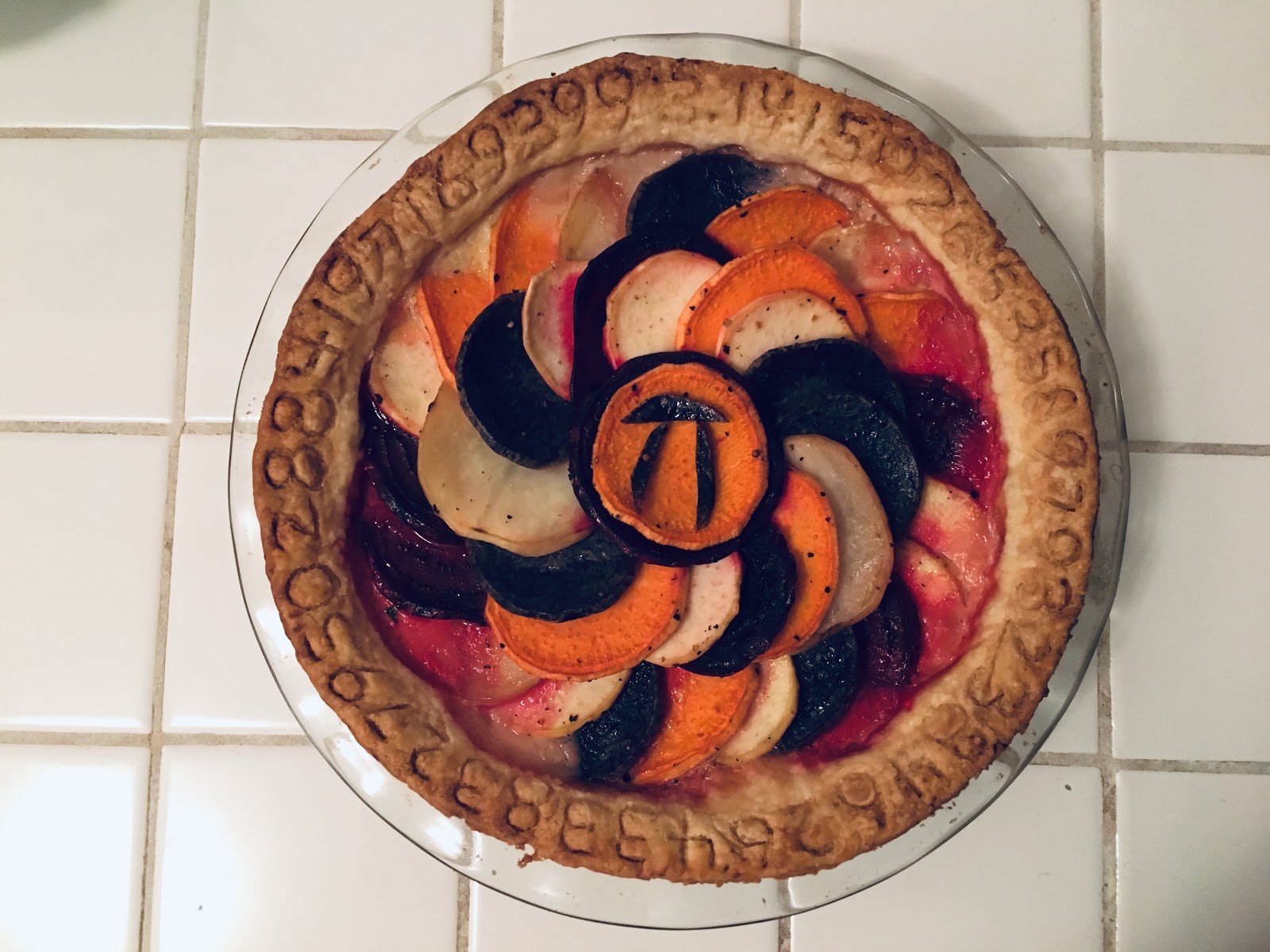
This year's finished pie!
Happy Pi Day, all! Leave it to pie to bring to surface some deep mathematical insights on pi, square roots, and irrationality at large. And leave it to pi to give us a reason to make, be creative with, and eat pie.
We would love to see your Pi Day pies, whether they’re sweet or savory, rational or irrational! You can share by tagging @MIND_Research on Twitter or by emailing us at info@mindresearch.org.
And for more delicious fun, take a look at Nina's other Pi Day creations! Clockwise from the top left: a savory vegetable cheese, lemon custard, haupia (chocolate and coconut), and strawberry pie from 2019, 2017, 2016, and 2015, respectively.
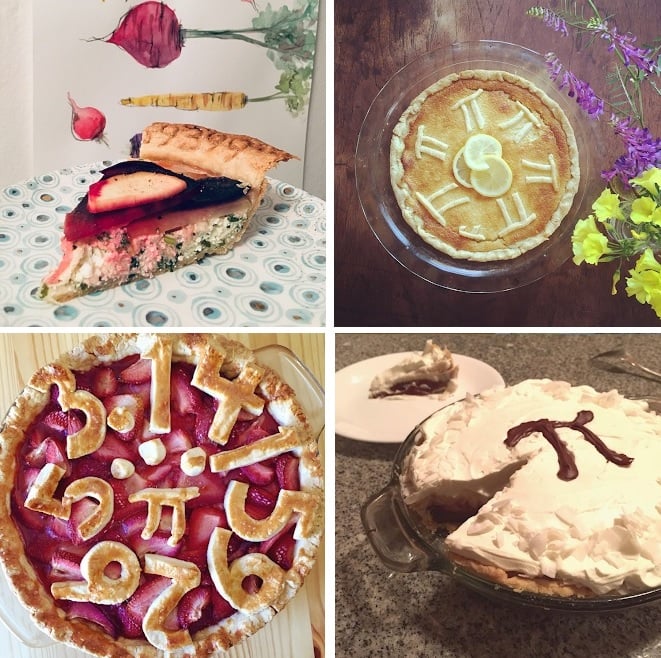

Nina Wu is an Educational Game Designer at MIND Research Institute. She enjoys finding the math in her daily hobbies, including dance and art.
Comment